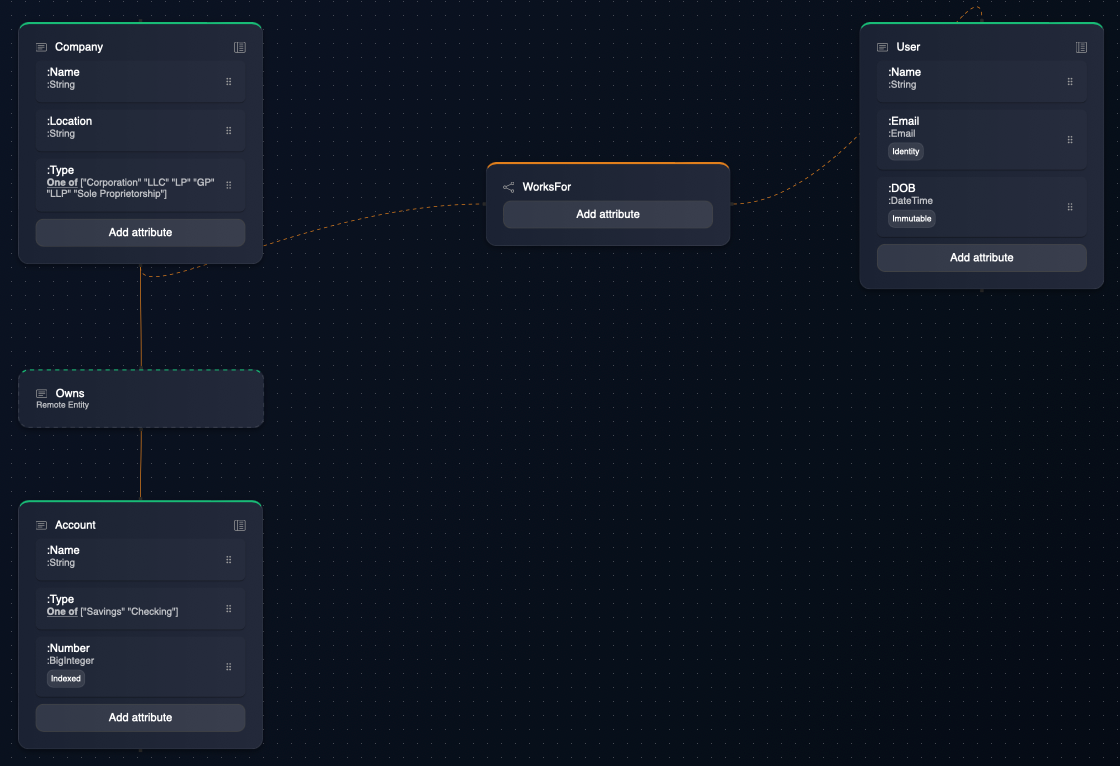Graph-based Data Model
Fractl supports a Graph-based Hierarchical Data Model. This is a better fit over relational or, even, generic graph-based approaches for most applications in numerous ways:
- The business domain model - the structure and shape of information in applications - can be precisely mapped to Fractl's data model.
- From a developer's perspective the hierarchical and nested nature of this data model brings a lot of flexibility to modeling data. It is possible to represent any combination of maps and lists with this data model. Map of list of map of map of list of maps? Bring it on!
- The data model provides an elegant way for implementing ownership and access-control policies. More on this in the Zero Trust Programming section.
The following are some salient features of the data model:
- Entity-relationship Graph: Domain data is captured as entities. Entities that are related to each other are mutually linked via a relationship. The entities and relationships form a graph, with entities as nodes and relationships as links.

- Hierarchical: There are two kinds of relationships -
:containsand:between. While:betweenrelationship is a simple association between two entities,:containsrelationship form a more structured containment/parent-child relationship. Entities that are related to each other via a:containsrelationship form a tree. So, the data model ends up being a graph of trees.

- Paths:
Since the Entity records of an application are organized as a graph, it is important to be able to address and access a given record from the graph easily. Fractl has the concept of a path that uniquely pinpoints to a record in the graph as a node in one of the interconnected trees. This path is available both as a serializable data representation (encoded as a string) and also as a binding in the context of a computation in a dataflow.
- Type Composition and Inheritance:
Fractl also supports a more traditional way to design the schema, as compositions of data structures.
For example, a :Person entity may be seen as a composition of various simpler structures like personal and
contact information:
(record :PersonalInformation
{:FirstName :String
:LastName :String
:DateOfBirth :DateTime})
(record :ContactInformation
{:Street1 :String
:Street2 :String
:Zip :String
:Email :Email
:PhoneNumber :String})
(entity :Person
{:Name {:type :String
:guid true}
:Personal :PersonalInformation
:Contact :ContactInformation})
New derived-types could be defined by way of type-inheritance:
(entity :Student
{:meta {:inherits :Person}
:School :String
:Courses {:listof :String}})
The :Student entity will have all the attributes defined for a :Person (like :Name and :Contact)
in addition to its own local attributes like :School and :Courses.